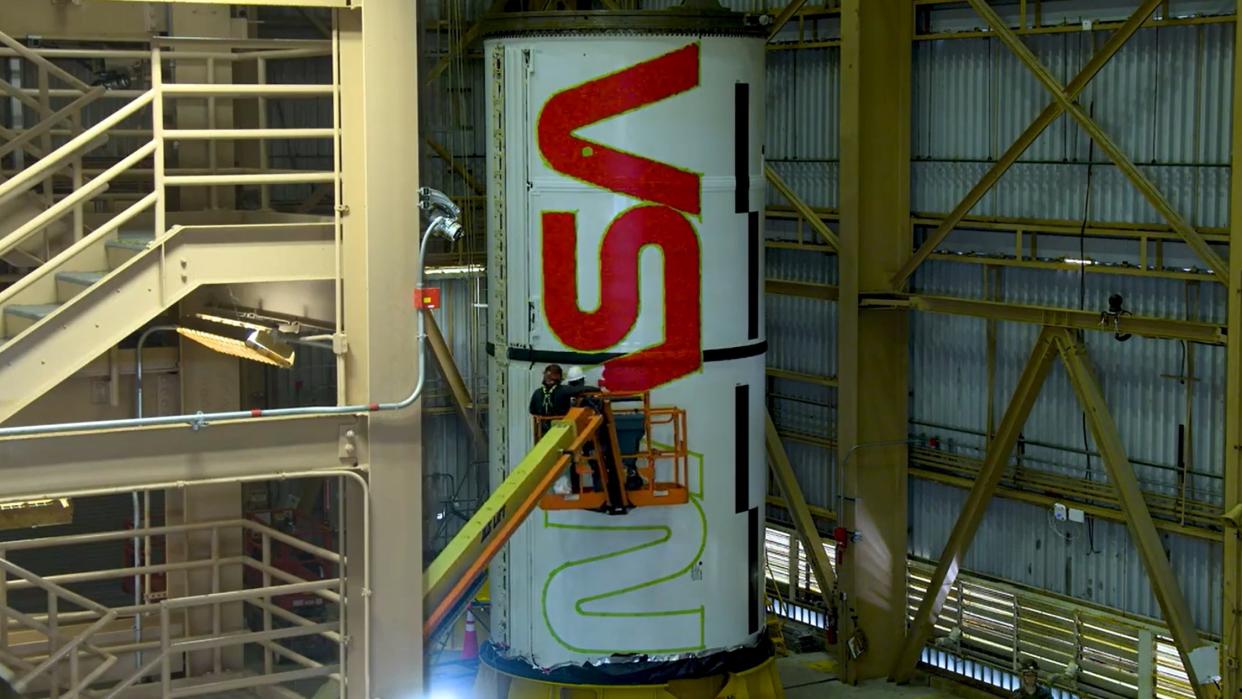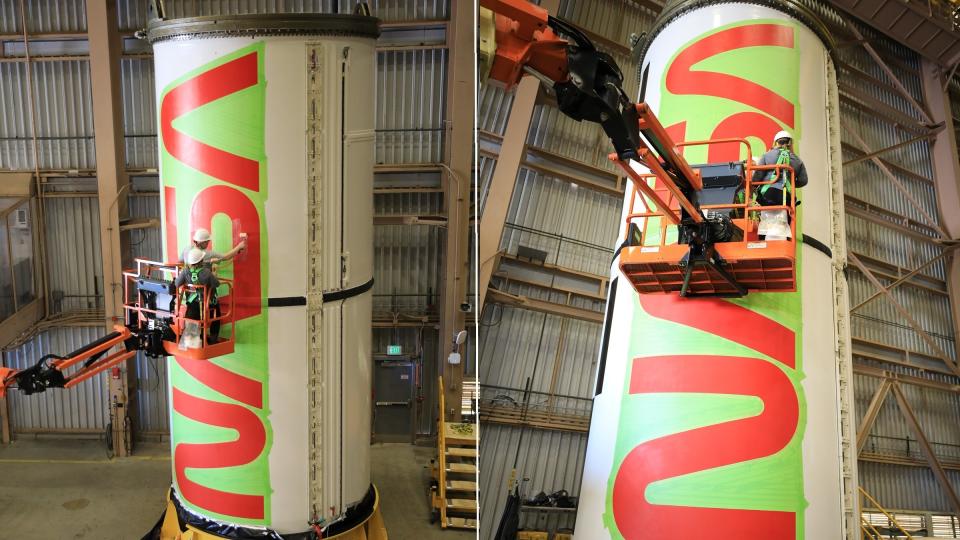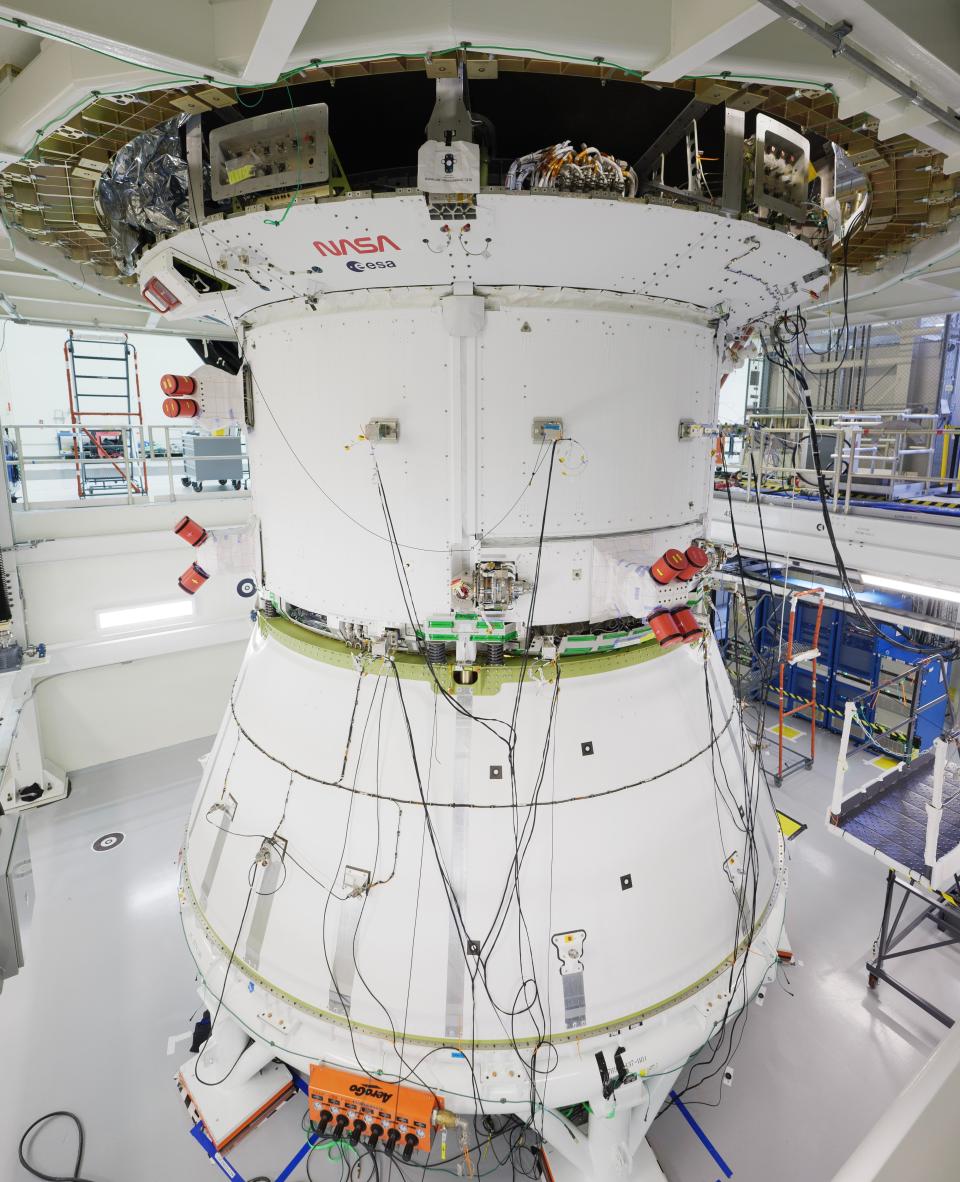NASA 'worm' logo crawls onto Artemis 2 moon rockets (video)

A new video shows NASA's "worm" crawling on the side of a rocket.
Engineers recently sprayed the iconic NASA "worm" logo on two solid rocket boosters for Artemis 2, which will be the first human moon mission in more than 50 years. The agency video shows the process in action: the outline of the curvy "NASA" lettering rapidly filling up with red as technicians carefully color in the lines.
The two boosters will support the Space Launch System (SLS) megarocket that will send four astronauts around the moon no earlier than September 2025. Each letter of the worm is nearly 7 feet (2 meters) high, and the logo is roughly 25 feet (7.5 m) from end to end, according to a recent NASA statement.
Related: NASA brings back retro 'worm' logo for upcoming Artemis 2 moon mission (photos)

Artemis 2 is slated to launch NASA commander Reid Wiseman, NASA pilot Victor Glover (who will become the first Black person to leave low Earth orbit, or LEO), NASA mission specialist Christina Koch (the first woman to go beyond LEO) and Canadian Space Agency astronaut Jeremy Hansen (the first non-American).
The launch dates for Artemis 2 and the moon-landing effort Artemis 3 were delayed in January due to numerous technical reasons. But development continues on the two missions, as well as training for Artemis 2. Artemis 3 will touch down on the lunar surface no earlier than 2026, pending readiness of spacesuits and SpaceX's Starship lander.

NASA revived the worm logo — first used in 1975 — for limited use in 2020, according to Space.com partner collectSPACE. More commonly, NASA uses its "meatball" logo, a 1959 image brought out of retirement by the agency in 1992 to invoke the "glory days" of Apollo, according to agency materials.
You can also spot the worm upon the Artemis 2 Orion spacecraft that will house the four astronauts during their moon mission.

RELATED STORIES:
— US must beat China back to the moon, Congress tells NASA
— Astronauts won't walk on the moon until 2026 after NASA delays next 2 Artemis missions
— 55 years after Apollo 8's Christmas at the moon, a new Artemis crew readies for launch (exclusive)
Artemis 2 and 3 are both part of the larger Artemis program that aims to take astronauts to the moon's south pole and to build a permanent settlement there, where water ice can supply life support, fuel and other mission needs.
NASA is leading a coalition of nations under the Artemis Accords. Some of those countries, like Canada and certain member states of the European Space Agency, are directly contributing hardware in exchange for moon mission opportunities. Other nations have signed on under the second aim of the accords, which is to agree to norms of peaceful space exploration led by the United States.

